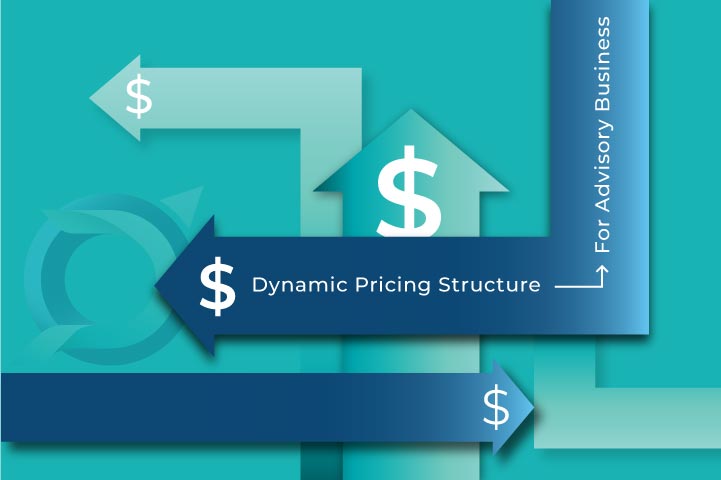
Contents
Recently updated on December 4th, 2024 at 09:28 am
For your accounting advisory services, competitive pricing and the standard pricing formula just isn’t the right way to go. Since it’s a service you provide in addition to your core offerings, lead with the value you provide. It’s important that your clients know what the deliverables, like the custom accounting dashboards and financial performance analytics you provide, are worth. And you should be clear when you describe what those services are, no matter which one of the following pricing models you choose.
Types of Dynamic Pricing Models
There are quite a few pricing models to choose from, each with its advantages and disadvantages.
Value Pricing
Value pricing means you group your services into bundles that you charge a set amount for. The price is set upfront, and clients know exactly what they are paying and what services they get. Value pricing can separate time from profit, making your potential profit no longer connected to the hours worked. It also can reduce client shock because clients know the pricing upfront.
Discount Pricing
Discount pricing is a promotional strategy that’s often used to increase sales, penetrate a market, or convince current clients to try new services by offering them at lower prices or even free for a limited time.
Pay-as-You-Use Pricing
With the pay-as-you-use pricing model, clients only pay for services when they need them. With this model, the client has full control over the services they use, which many clients prefer. This model also minimizes the entry cost of new clients, who can start using your services with a lower budget and only pay for what they can afford.
Recurring Pricing
This is also known as subscription pricing, where clients pay regularly for a product or service. Often this model is combined with discount pricing, where a monthly subscription costs so much per month or a whole year can be paid for in advance for a lower monthly rate. This type of pricing requires an advisory business to turn services into products and to experiment with which services should go in each pricing tier. Instead of setting a flat fee and dealing with scope creep, your business defines levels of service and lets the clients decide what they want.
Fixed Pricing
With the fixed pricing model, you set up a menu of services and charge a fixed price for them across the board. This means the fee for a specific service will be the same for any of your clients. The advantage of fixed pricing is that you only have to set your price once and apply that price to any client who requests the service. This makes it quicker to price your services and works well when you get a lot of sales calls. Plus, it helps your business grow rapidly and increases cash flow.
Open Pricing
Open pricing just means that you make all of your pricing public. It can be used with any one of the pricing models above. It’s often reassuring to clients to know that they are getting the same prices as everyone else.
The Choose-What-Is-Right Pricing Model
There are a lot of options when it comes to pricing your accounting advisory services, but which pricing model is right for your business? The one that fits your business growth and target market. Your pricing model will define your business, including the type of clients you attract, how many hours of work will have to be done to make a profit, and more.
Value is what will set your advisory business apart, and its perceived value will influence how much clients are willing to pay. When it comes to choosing the right model, you must rely on more than one variable. Consider what the competition is offering and where they set their prices, the unique services your company offers like providing accounting business intelligence software and customizable accounting dashboards, and your overhead expenses.
When and How You Should Change Pricing?
The first thing you need to consider when changing your pricing model is keeping existing clients. This starts by communicating the reason for the change. There are many reasons why you may need to change prices, including inflation, changes in government policies, new compliance rules, or the new features added with accounting business intelligence software and real-time accounting dashboards.
But all the reasons for the change don’t have to be things that are out of your control. Focus on the benefits you are providing for your clients and show them the end results of the work your business has put in. You can do this with your accounting business intelligence software and show exactly what your business has contributed.
Your pricing changes can be global and affect all of your clients. Or you can apply them to only those clients where your accounting advisory services have contributed heavily to growing your client’s business and achieving their goals. Confidence and clarity in communicating the change will make the change easy and strengthen your client relationships.
By adopting a dynamic pricing model, you give your sales staff a lot of freedom and more chances to close sales. They can quote the best price for services based on their early evaluation of a client’s business and budget. With clear costing and minimum profit parameters, they can tailor services and pricing to benefit both your business and your clients. By empowering them to discount pricing or even to give a free trial, they can give clients the chance to test service and remain a customer when they may have looked elsewhere.
Also, Explore
Contact Us

Call Now:
+1 (743) 223-2073










